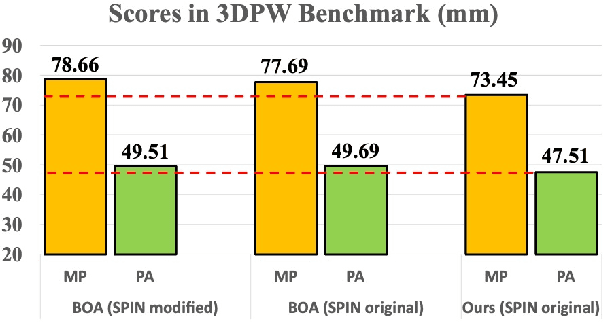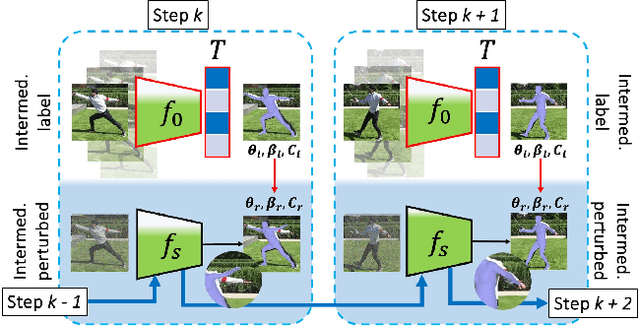3DHR-Co: A Collaborative Test-time Refinement Framework for In-the-Wild 3D Human-Body Reconstruction Task
Paper and Code
Oct 02, 2023



The field of 3D human-body reconstruction (abbreviated as 3DHR) that utilizes parametric pose and shape representations has witnessed significant advancements in recent years. However, the application of 3DHR techniques to handle real-world, diverse scenes, known as in-the-wild data, still faces limitations. The primary challenge arises as curating accurate 3D human pose ground truth (GT) for in-the-wild scenes is still difficult to obtain due to various factors. Recent test-time refinement approaches on 3DHR leverage initial 2D off-the-shelf human keypoints information to support the lack of 3D supervision on in-the-wild data. However, we observed that additional 2D supervision alone could cause the overfitting issue on common 3DHR backbones, making the 3DHR test-time refinement task seem intractable. We answer this challenge by proposing a strategy that complements 3DHR test-time refinement work under a collaborative approach. Specifically, we initially apply a pre-adaptation approach that works by collaborating various 3DHR models in a single framework to directly improve their initial outputs. This approach is then further combined with the test-time adaptation work under specific settings that minimize the overfitting issue to further boost the 3DHR performance. The whole framework is termed as 3DHR-Co, and on the experiment sides, we showed that the proposed work can significantly enhance the scores of common classic 3DHR backbones up to -34 mm pose error suppression, putting them among the top list on the in-the-wild benchmark data. Such achievement shows that our approach helps unveil the true potential of the common classic 3DHR backbones. Based on these findings, we further investigate various settings on the proposed framework to better elaborate the capability of our collaborative approach in the 3DHR task.
 Add to Chrome
Add to Chrome Add to Firefox
Add to Firefox Add to Edge
Add to Edge